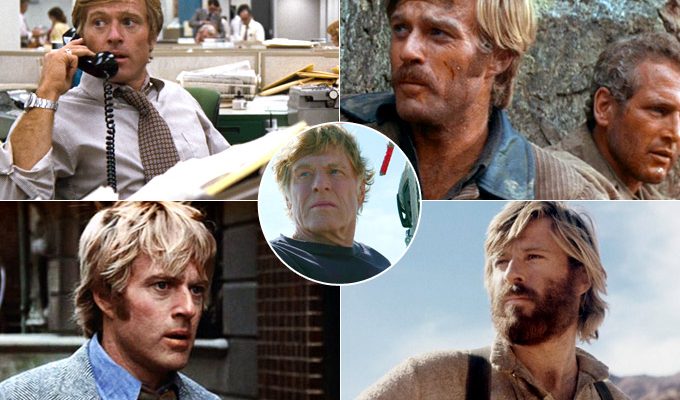 This Friday, one of the most powerful films of Robert Redford‘s career comes to the big screen in “All Is Lost” (our review). Stripped of most of the things that made him a star, both externally (he’s now 77 and his costume seems to have been purchased during a 40% off sale at J. Crew) and internally (gone is his affable charm), here he gives the kind of raw, fearless performance that actors of his status and importance all too often shy away from. In short: “All Is Lost” isn’t safe. But then again, Redford has never really played it safe. From his choices both as an actor and a director (most recently with this year’s uneven political thriller “The Company You Keep“) to his continued political activism, to his cockamamie goal of creating an essential film festival experience in the snowy slopes of Park City, Utah, Redford has long been resistant to anything even remotely reasonable.
This Friday, one of the most powerful films of Robert Redford‘s career comes to the big screen in “All Is Lost” (our review). Stripped of most of the things that made him a star, both externally (he’s now 77 and his costume seems to have been purchased during a 40% off sale at J. Crew) and internally (gone is his affable charm), here he gives the kind of raw, fearless performance that actors of his status and importance all too often shy away from. In short: “All Is Lost” isn’t safe. But then again, Redford has never really played it safe. From his choices both as an actor and a director (most recently with this year’s uneven political thriller “The Company You Keep“) to his continued political activism, to his cockamamie goal of creating an essential film festival experience in the snowy slopes of Park City, Utah, Redford has long been resistant to anything even remotely reasonable.
Redford had an unexceptional upbringing; at a recent press conference held after a New York Film Festival screening of “All Is Lost,” he remarked that his childhood in California was the closest he ever got to the ocean (something that he became intimately familiar with during filming). He briefly attended the University of Colorado before being asked to leave, and took classes in Brooklyn (at the Pratt Institute) and the American Academy of Dramatic Arts in New York City. Watching his early television work on things like “Alfred Hitchcock Presents” and “The Twilight Zone,” it isn’t apparent that he is going to be one of the most iconic American actors ever. There is, however, an unmistakable something there.
But despite his undeniable charisma, not everyone has always been on his side (just watch New York film critic David Edelstein re-appraise his career in a recent TV appearance). Redford has been nominated for acting in “The Sting,” and took home a 2002 honorary award, but aside from that his only competitive Oscar to date has been for directing 1980’s “Ordinary People.” It’s been almost 40 years since he has been nominated for acting. He’s due. The profound accomplishment of “All Is Lost,” one of the most grueling physical performances we’ve seen in a long time, was enough to get us thinking about his filmography, and its many highs.In fact, it was hard whittling down the “Essential” list to just ten movies; in order to do it, we needed a steely amount of Redford-esque resolve.
 “Butch Cassidy and the Sundance Kid” (1969)
“Butch Cassidy and the Sundance Kid” (1969)
Before “Butch Cassidy and the Sundance Kid,” Redford was a television actor who most would describe as “competent.” But in “Butch Cassidy and the Sundance Kid,” partnered alongside an equally irresistible Paul Newman, Redford was allowed to become the kind of star, in hindsight, he was always destined to be. As infamous Old West outlaw Harry Alonzo Longabaugh aka The Sundance Kid, Redford was able to fully inhabit a role that played to his strengths. In Sundance he was able to play up the conflicted morality, the threads of intensity underneath his cool demeanor, and the fact that without saying much, you could understand exactly what Redford was thinking. Partnered with the older Newman, too, Redford was able to play up his boyish charm, especially in the scenes where screenwriter William Goldman (who won an Oscar for the film) and director George Roy Hill played up the goofier aspects of the pair’s crimes (like when they use too much dynamite to blow open a train’s safe, sending bills fluttering into the air). The romantic burden of the film also falls to Redford, which he does very, very well (pushing Katharine Ross around in a bicycle basket? Classic Redford!), particularly when accompanied by the Burt Bacharach and Hal David songs, most notably “Raindrops Keep Falling On My Head,” a boldly anachronistic use of music in a western decades before Quentin Tarantino put rap songs into “Django Unchained.” This film represents the birth of Redford, his hair perpetually windswept, his eyes a piercing shade of blue, as a modern American movie star, and a damn fine actor to boot.

